September 12
Spatchcock Chickens Smoked and Seared on My BBQ Smoker Trailer
0 comments
September 12
0 comments
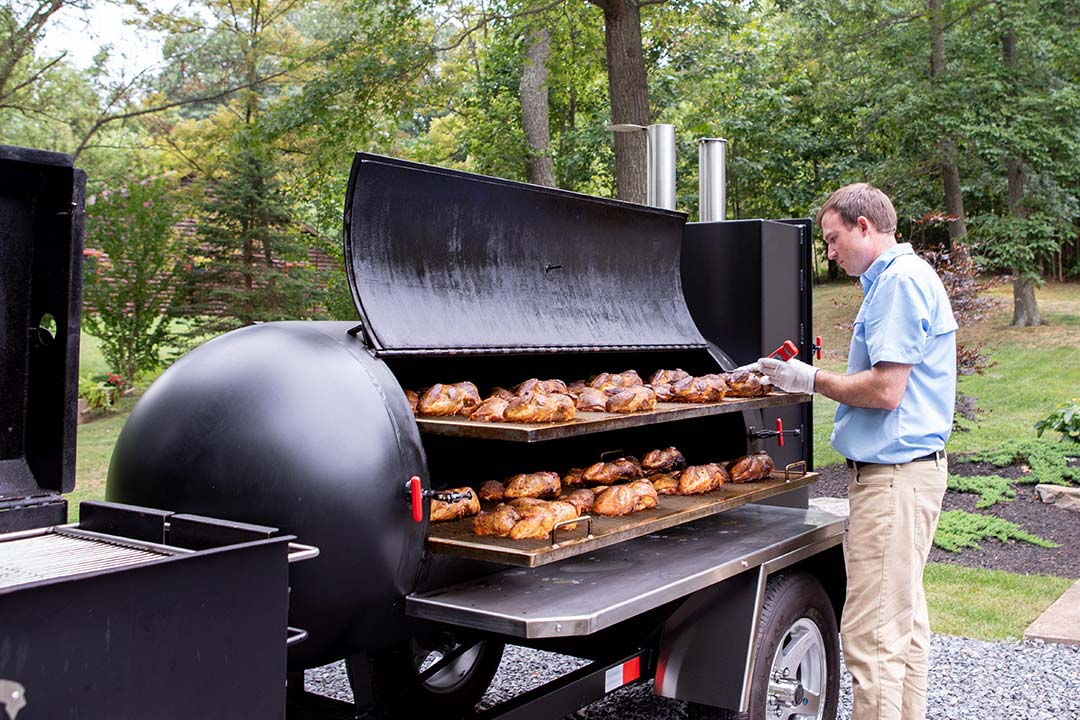
There are many ways to smoke or grill a chicken, depending on the cut you're cooking or the presentation you're looking for.
In this blog post, I will show you how I cook up whole chickens on my tank smoker and give them a bit of that char-grilled flavor that you can only get over direct heat, by using the charcoal grill mounted on the front of the trailer to finish them.
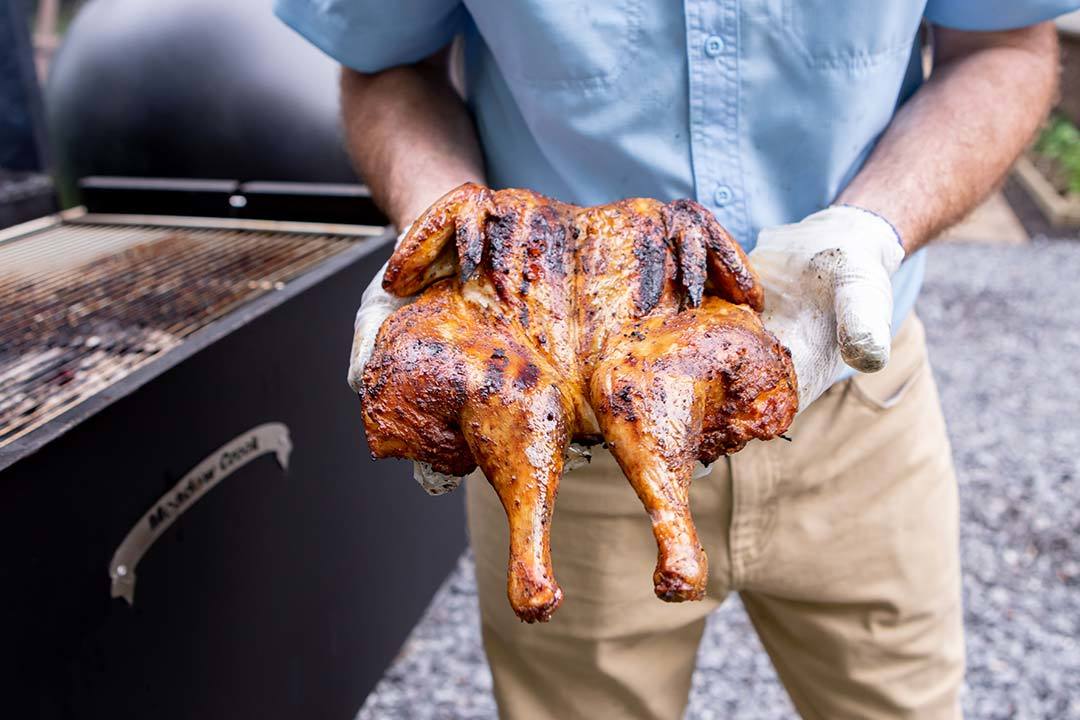
Here is a summary of the steps I used to cook these. Keep scrolling for more details...
You might be thinking, why not just cook them in the BBQ42 Chicken Cooker with the pivoting grate? You could certainly do that, but here are some things to think about:

Are you looking for a BBQ smoker trailer like this one that can both smoke and grill a variety of meats for a crowd? We'd love to build you one! It's easy to customize these with the upgrades that are right for your needs and budget:
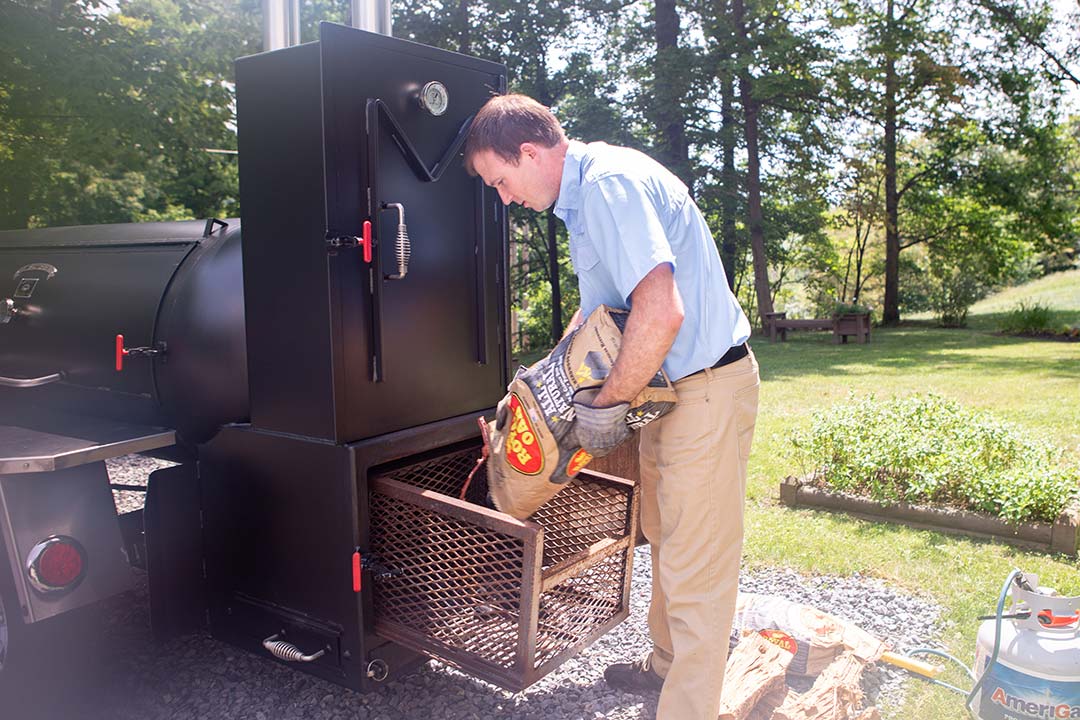
I fired the tank smoker with 22 pounds of 100% hardwood charcoal briquettes (two 11-pound bags) and a stick of apple wood from my wood pile. I opened all the vents completely and used my propane torch to heat the tank and light the fuel.
For this cook, I'm aiming for 275–300 degrees in the smoker. Remove the torch when it gets up to temperature, close the firebox door, and adjust the firebox vents to stabilize the smoker at your target temperature. Start with 1" and adjust it from there. If you don't have the insulated firebox or if the weather is oppressive, you'll need to give it more air.
This cook should take about 2.5–3 hours. I only added several pieces of apple wood after the initial light to keep it going.


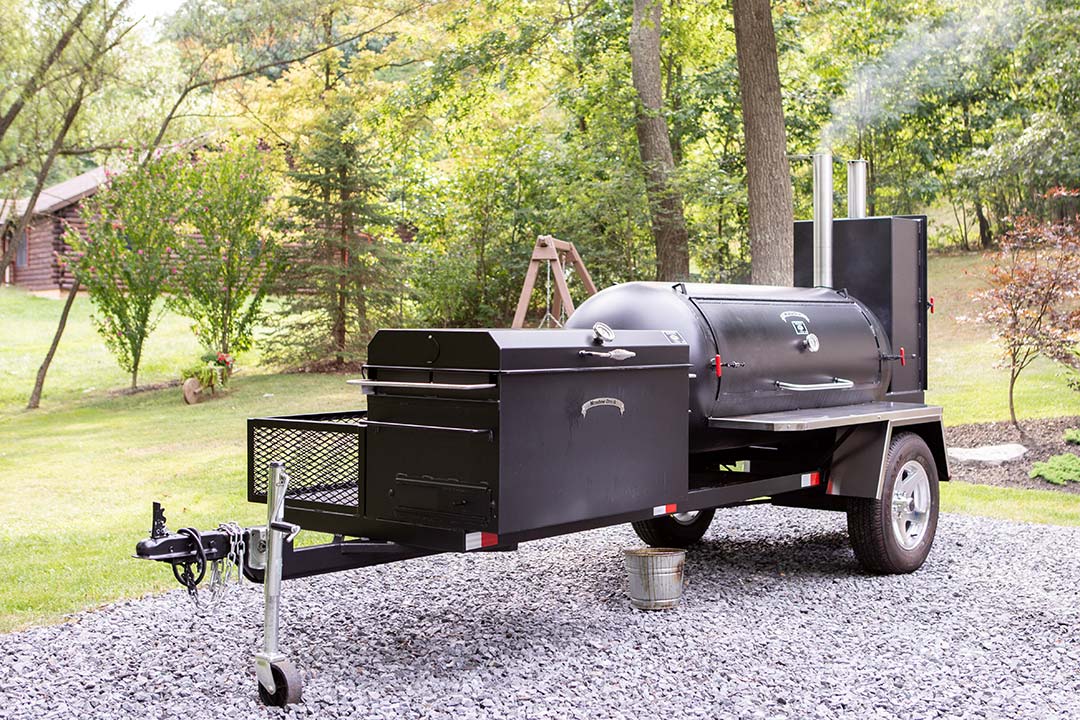

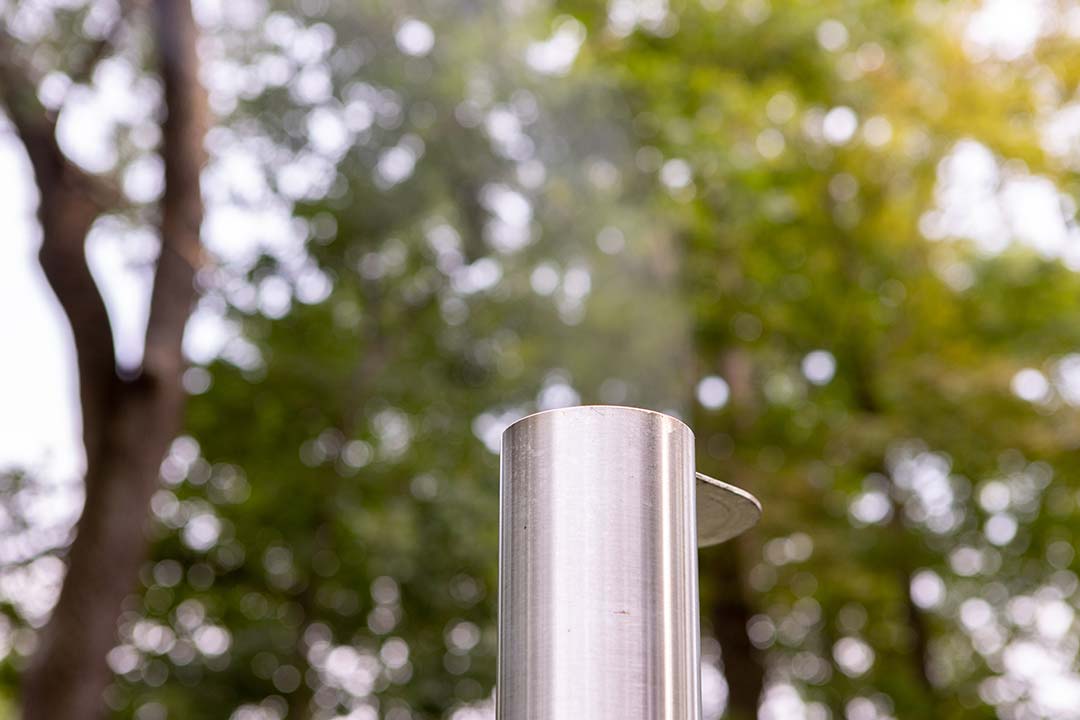
Now that we have the smoker fired, we can spatchcock and season the chickens...
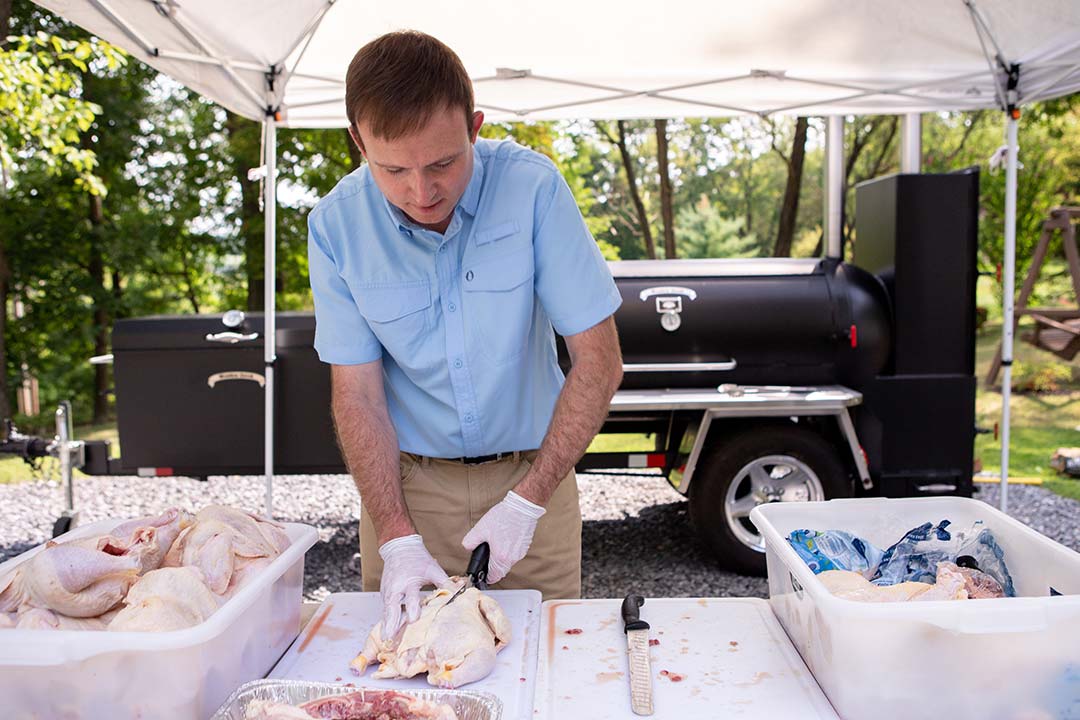
Remove the spine by cutting along both sides with a kitchen shears.
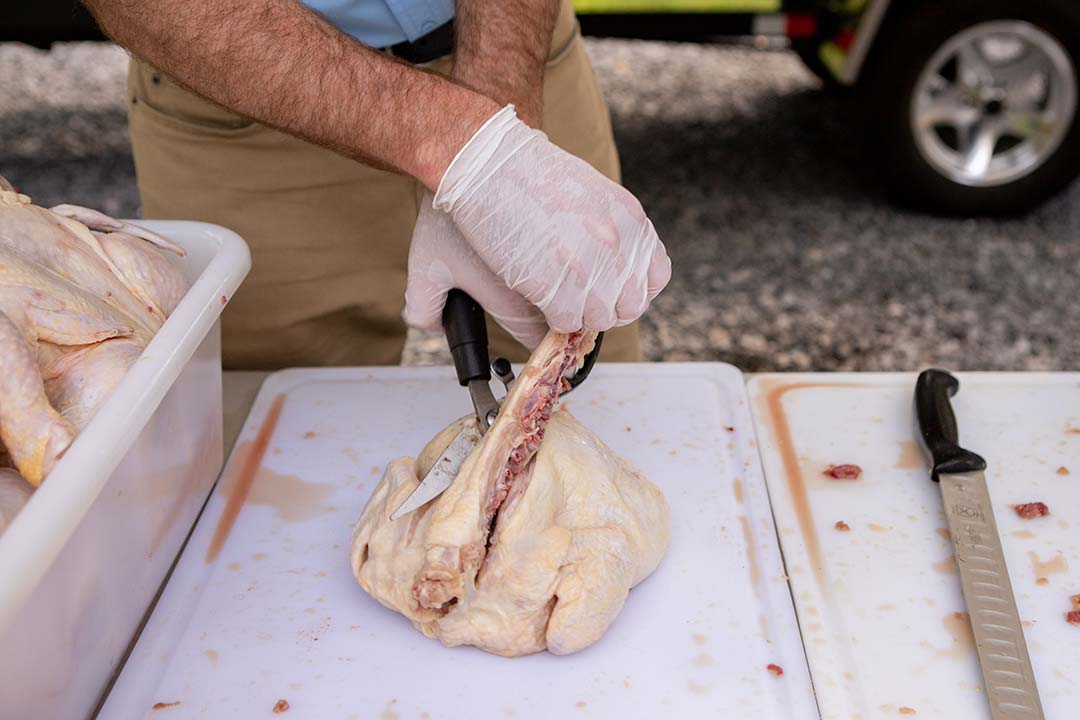
Make a cut on the inside of the carcass directly below the spine so that the bird can lie flat as shown below.
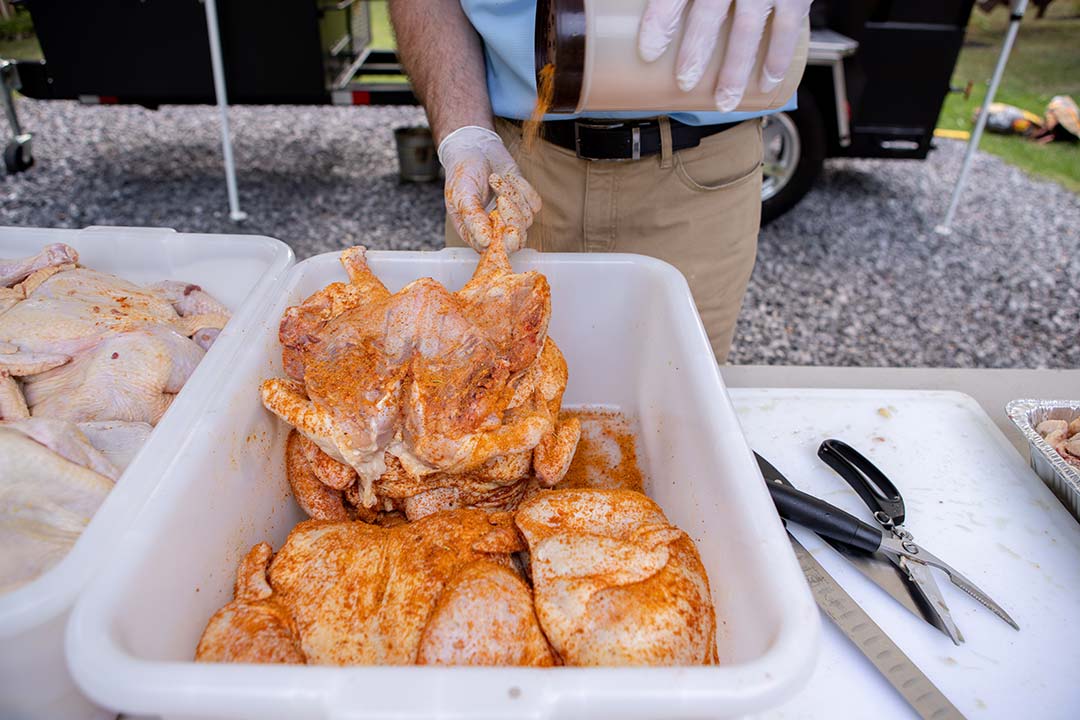
Season the chicken all over. I used a mix of Meadow Creek Barbecue Seasoning and Meadow Creek Gourmet Rub.
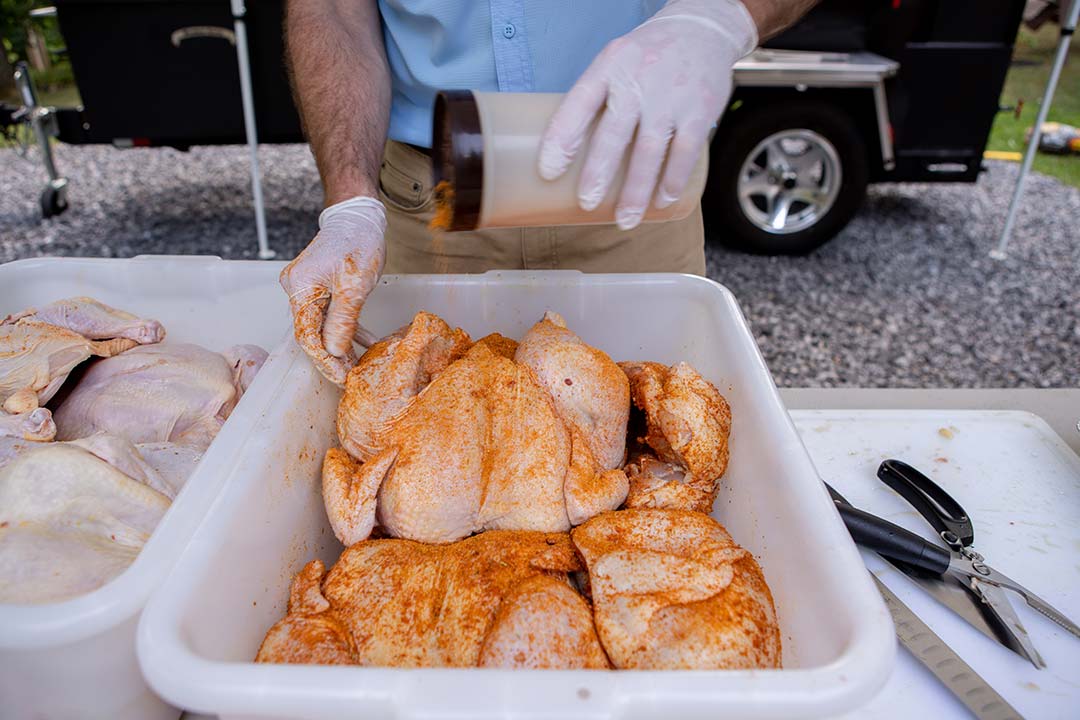
I like to rub some seasoning under the skin on the breast and in the cavity on the inside of the leg.
These are ready for the smoker now...
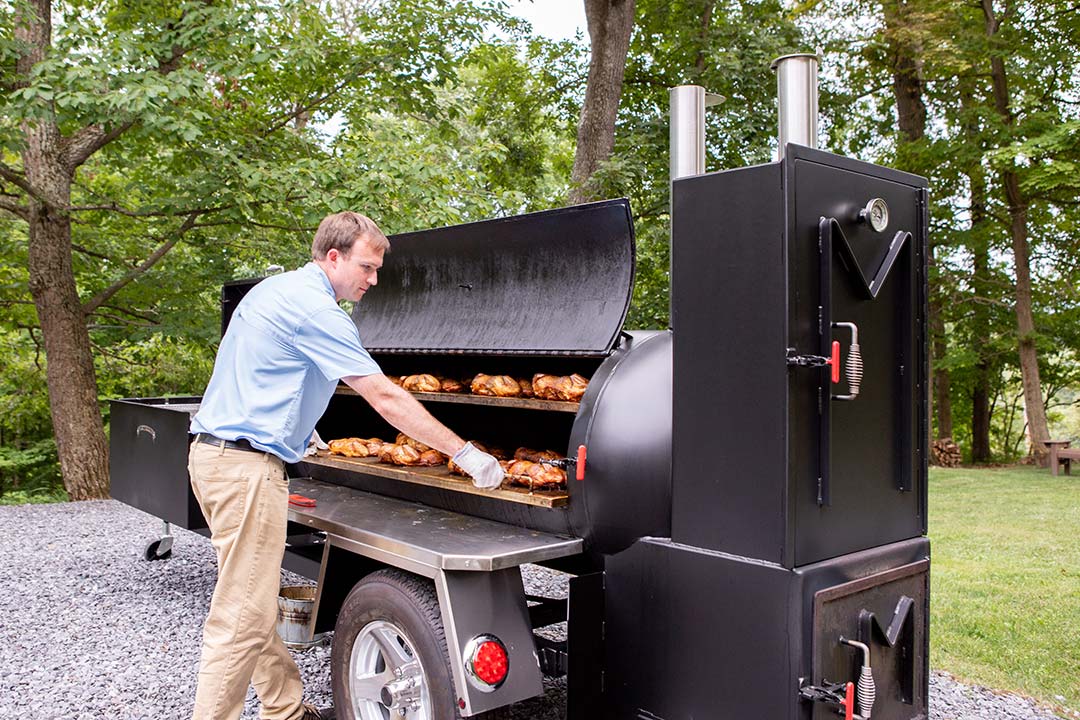
Our tank smokers have sliding grates on sturdy glides, which make it easy to load and check on the meat instead of having to reach inside of the smoker.

These birds are looking quite attractive!
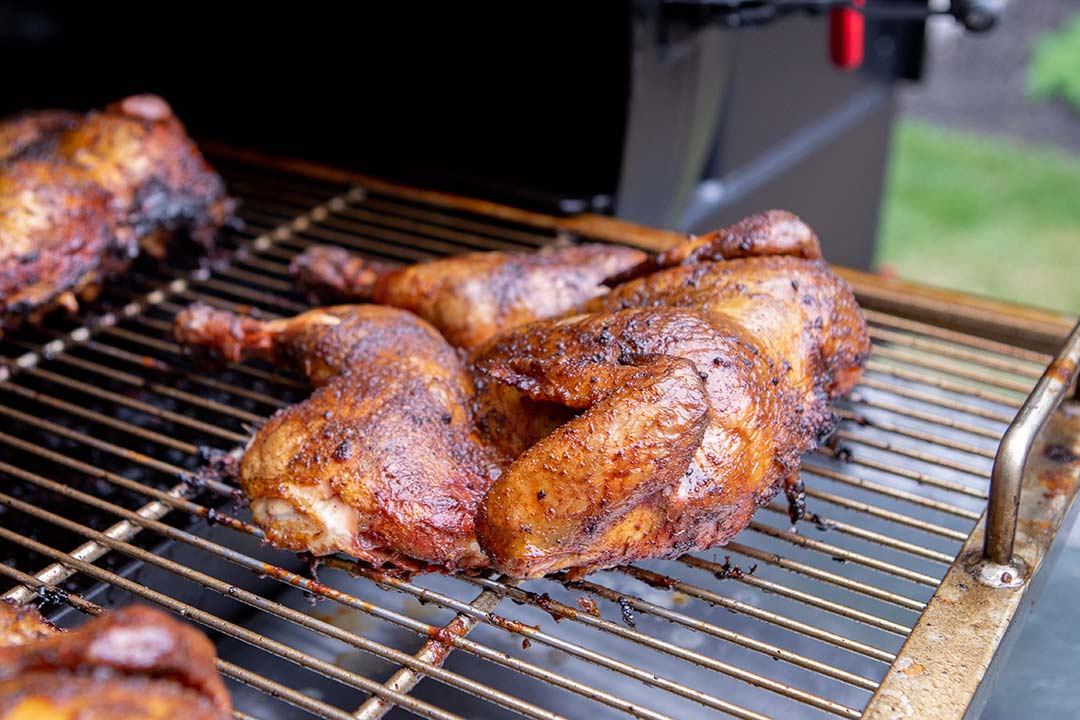
The meat in the bottom of the smoker on the end of the firebox will cook a little faster than the rest, so you'll want to keep an eye on how things are coming along. Use an instant-read thermometer to check on the meat as they get close to done. My favorite hand-held thermometer is the ThermoWorks MK4.
The chicken is done when the breast meat reaches 165 degrees F and the legs are up to 180–190 degrees. The breast meat will dry out more if you take it beyond the minimum temperature, but the dark meat will be more appetizing if you cook it to a higher temperature. Ideally, the legs will cook faster than the breast and both will finish at about the same time.
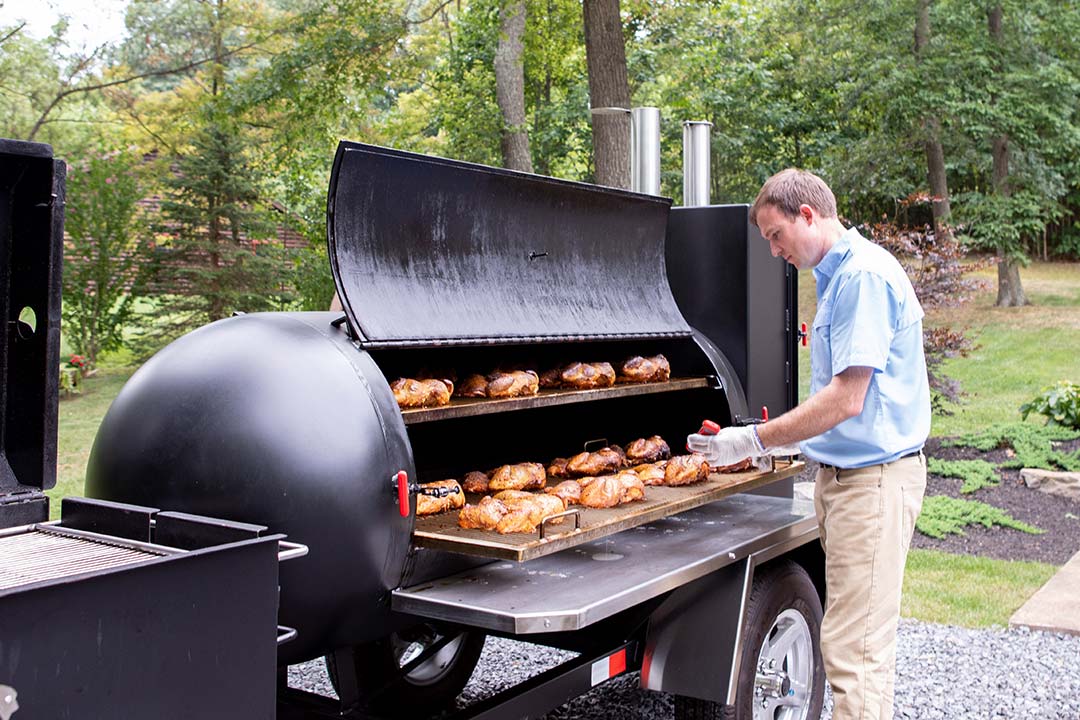
The optional stainless steel exterior shelves are a must-have, in my opinion. It's easy to wipe up drippings and sanitize the shelves, keeping your workspace clean.
Before the chickens were done in the smoker, I fired the BBQ42 with 15 pounds of Rockwood lump charcoal. I used my torch to light it, then mixed it and spread it out to form an even bed of heat under the grate.
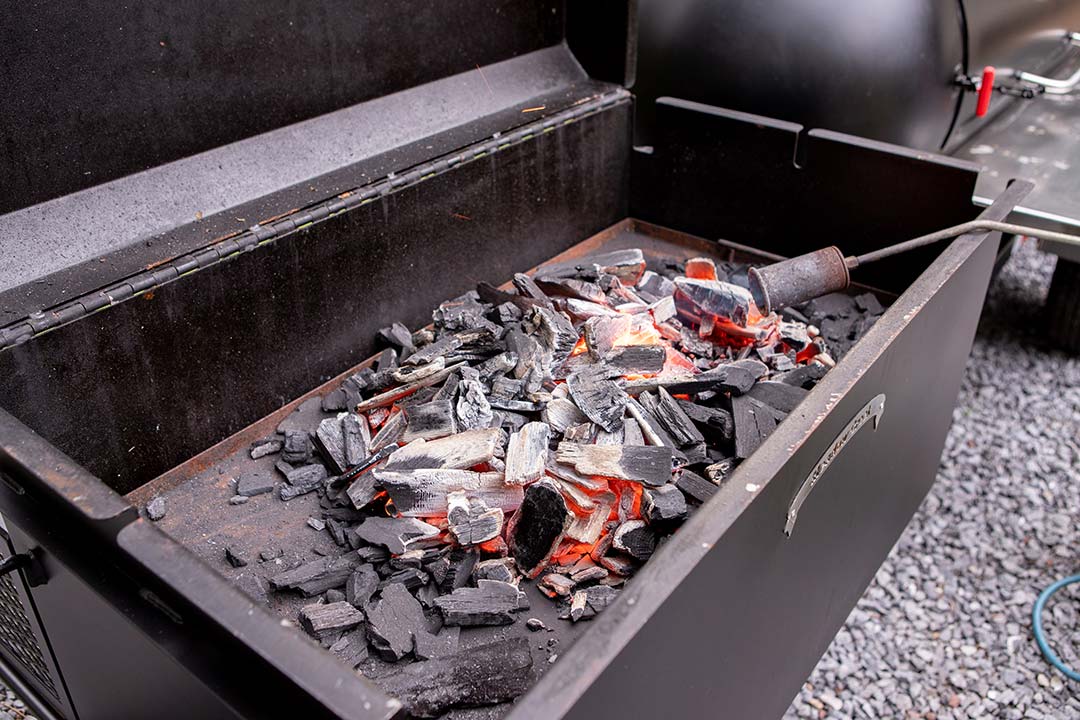
The charcoal pan was in the raised position and we used the flat grate to sear the chickens.
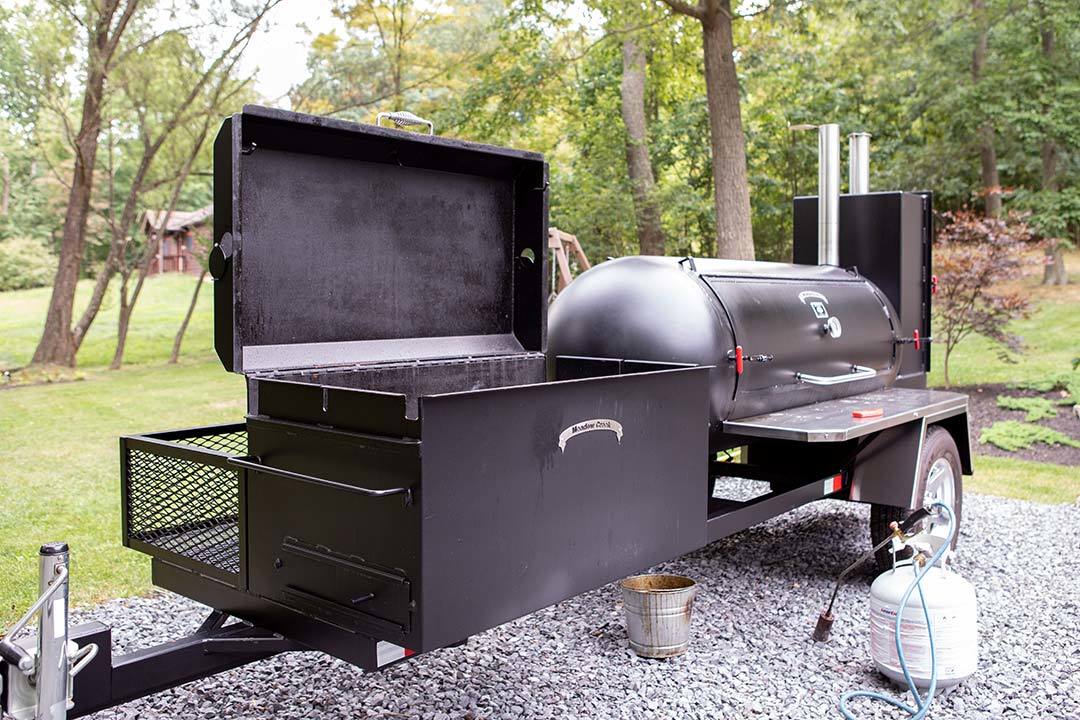
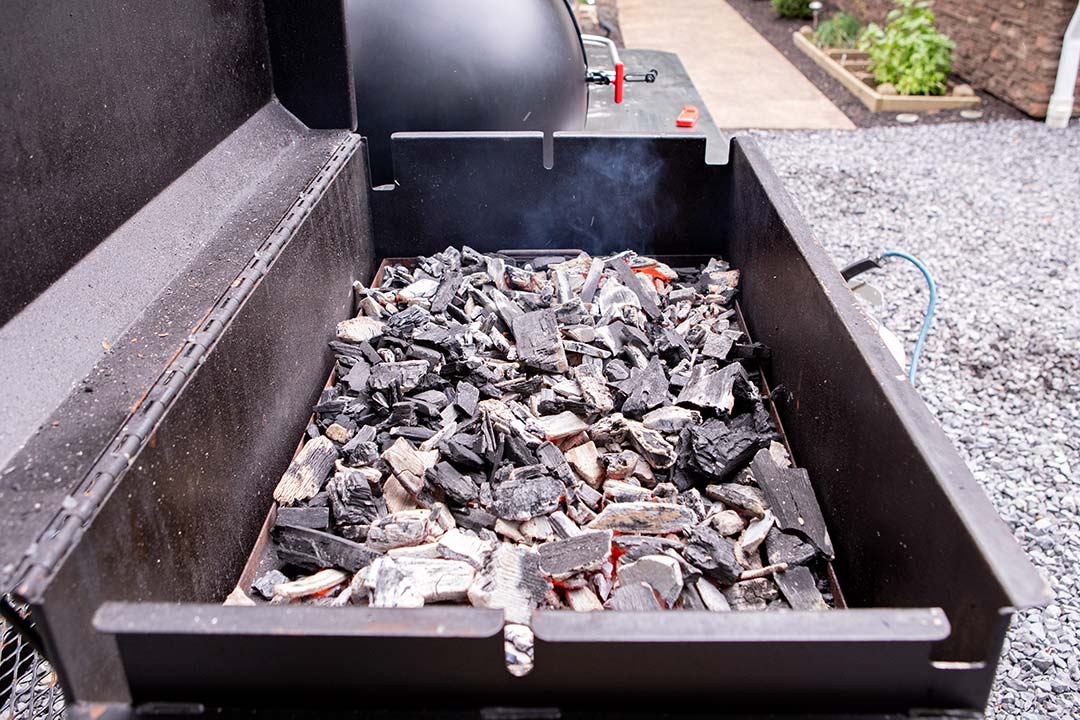
Close the lid and adjust the vents as needed to stabilize the grill around 400 degrees. Open the lid only to add, remove, or flip the meat so that you can keep the chicken on longer without the fire flaring up.
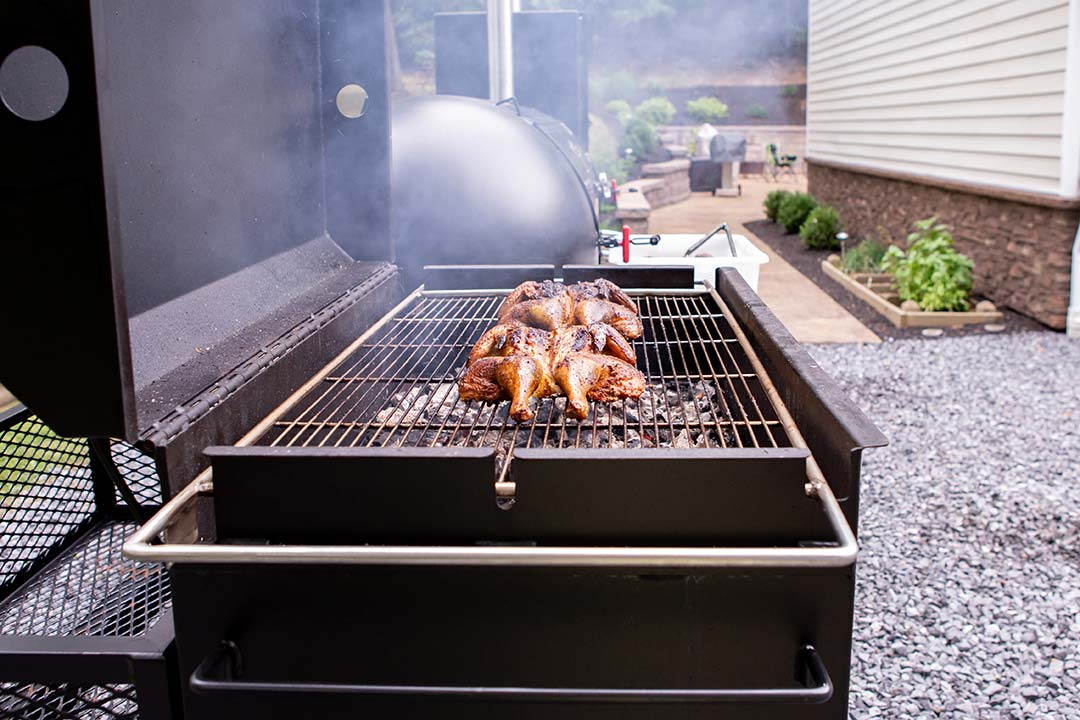

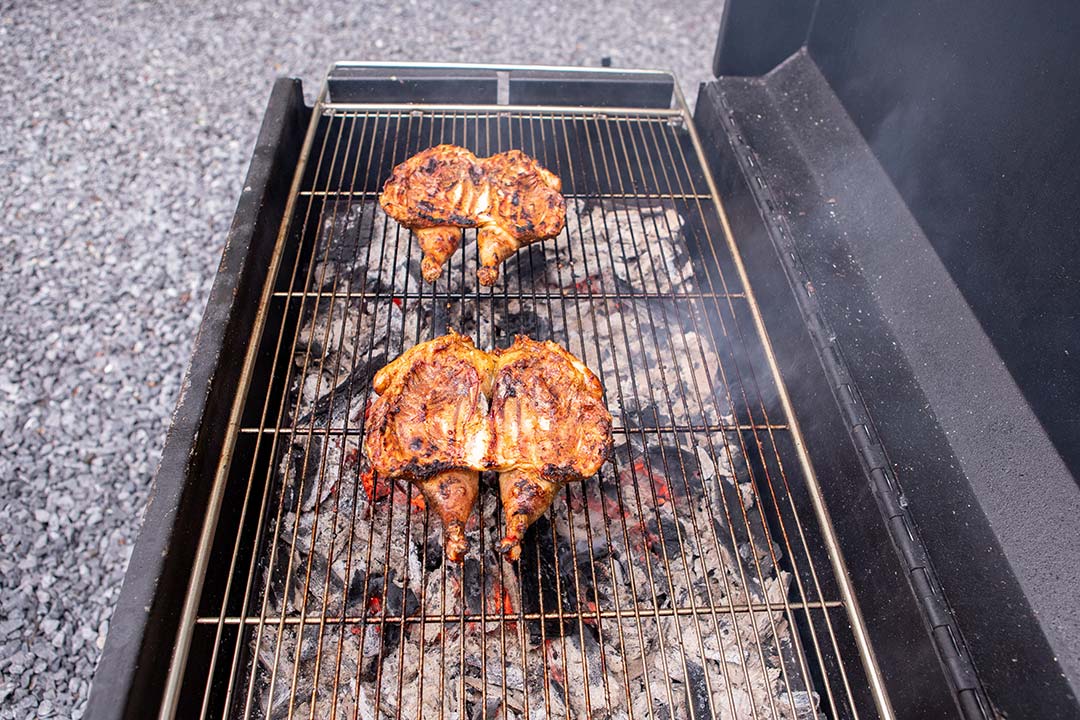


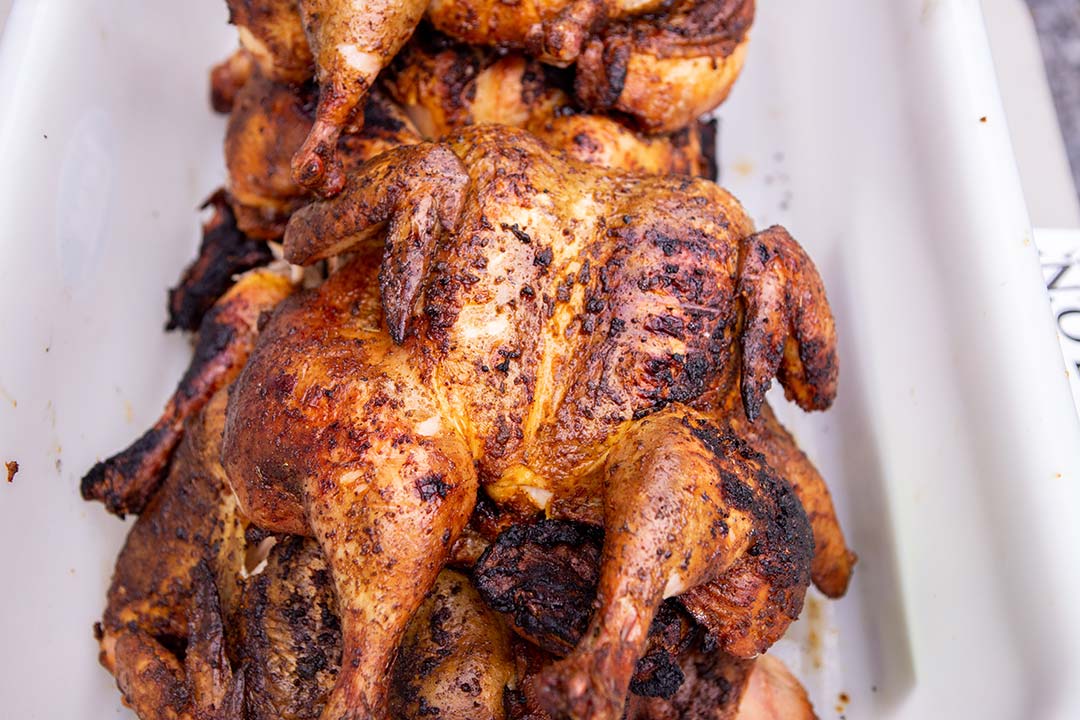
Transfer the chickens to a meat lug or a warming box for serving.
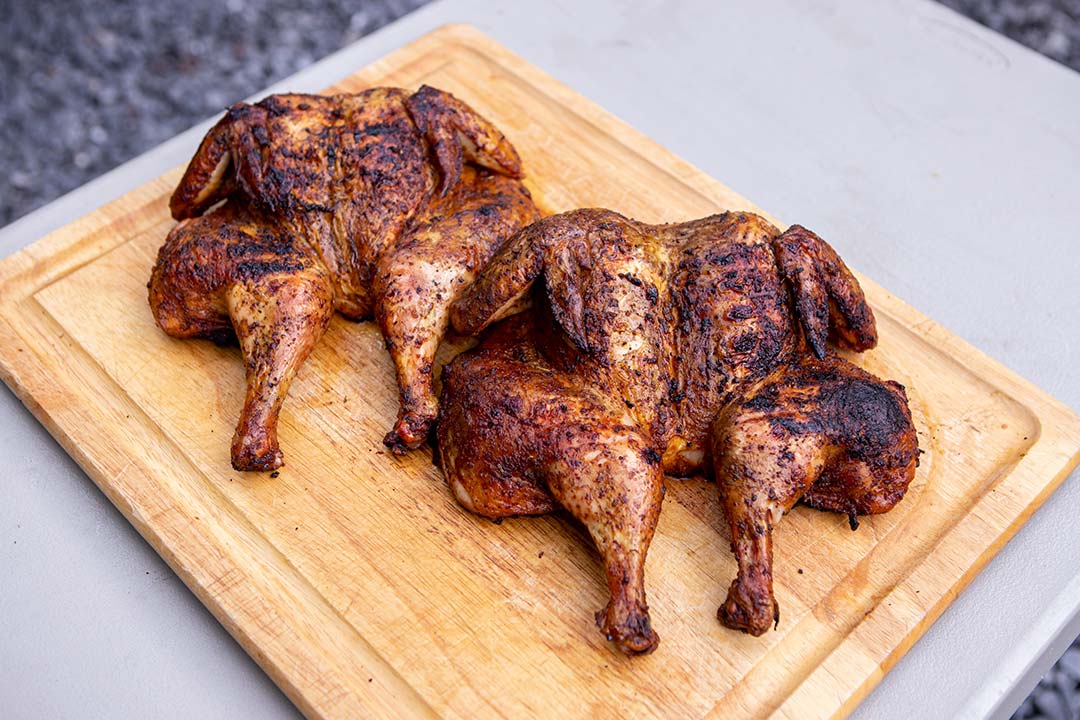
You could also sauce these before they come off of the smoker to add another dimension of flavor and to deepen the color, but I chose to keep it simple with a dry rub.
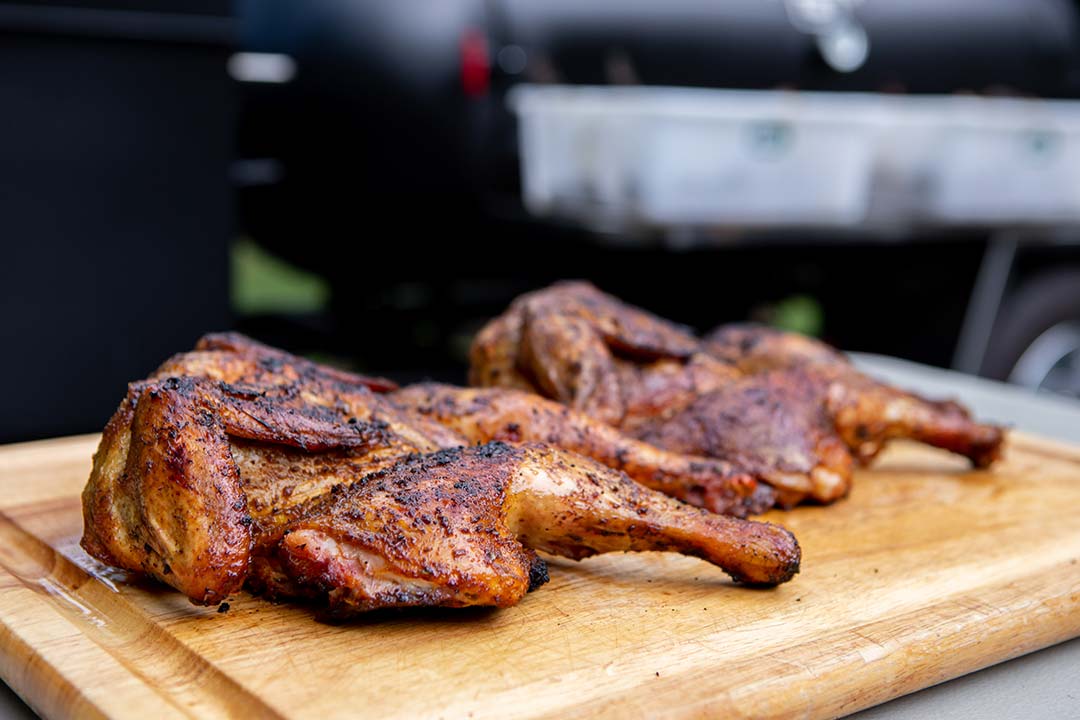
I was pleased with the outcome and the meat was delicious. Some of the skin was more crispy than the rest, but it was delightful.
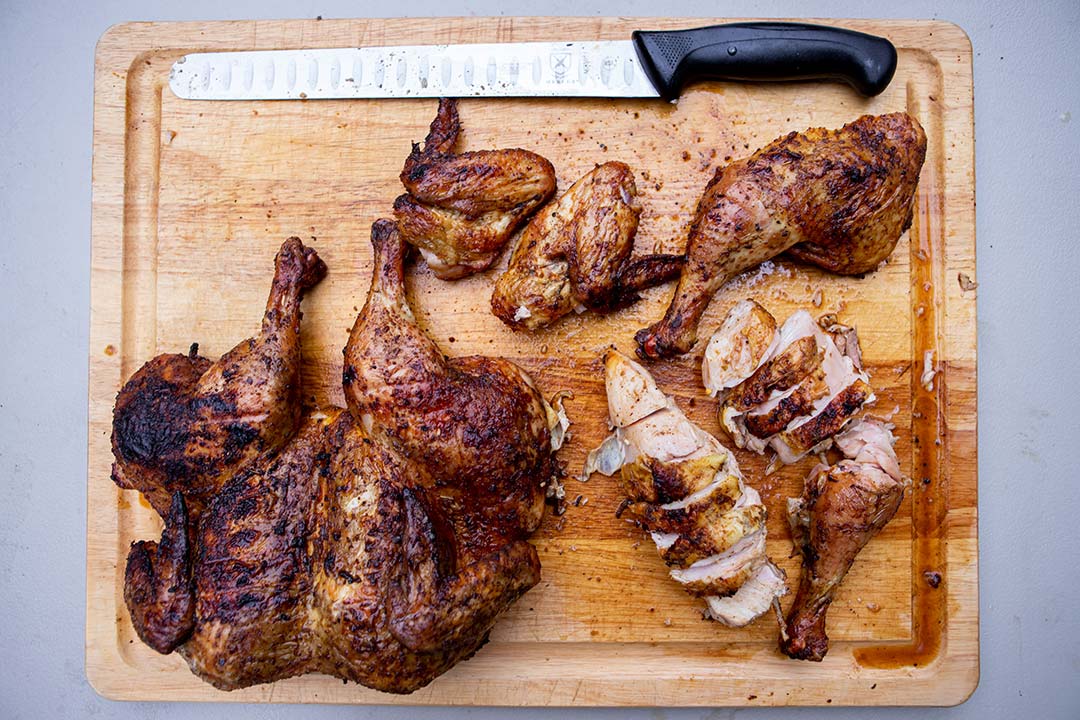
We vacuum sealed and froze the chickens for our own use. A bunch of delicious meals coming up!
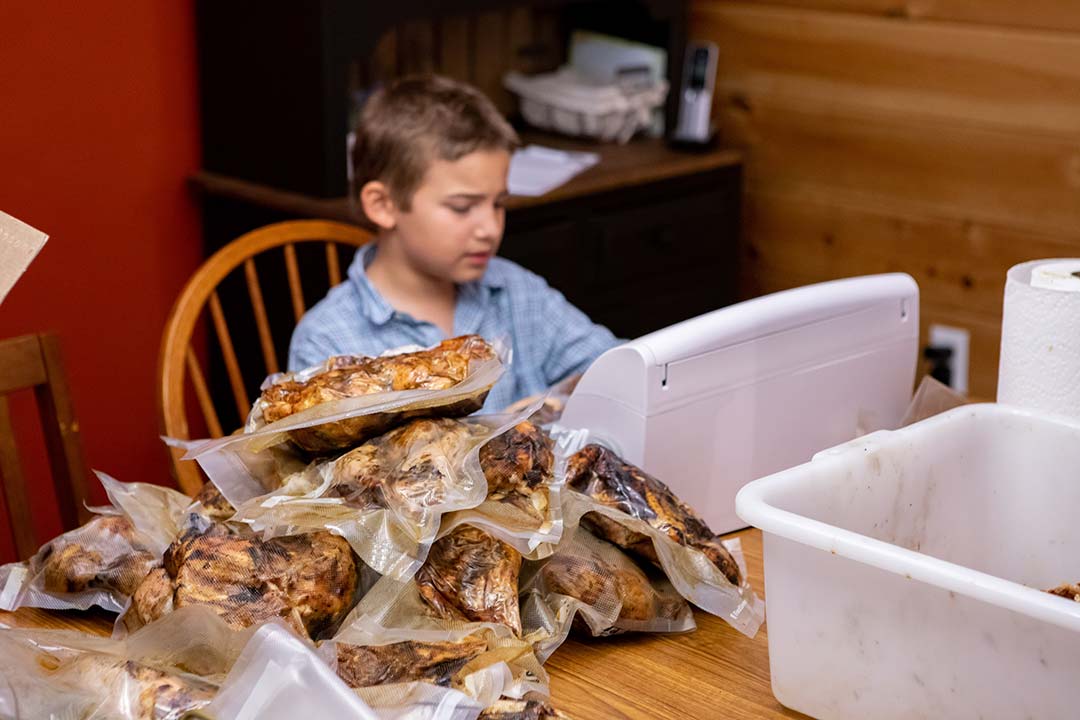
Are you tired of cooking on small backyard smokers and ready to upgrade to something with more room that you can pull behind your truck or SUV?
Check out the TS250 and customize it with some sweet upgrades, such as a front-mounted BBQ42, stainless steel shelves, trim package, insulated firebox, charcoal basket, and live smoke in the warming box:

The trailer is well-balanced and pulls like a dream.

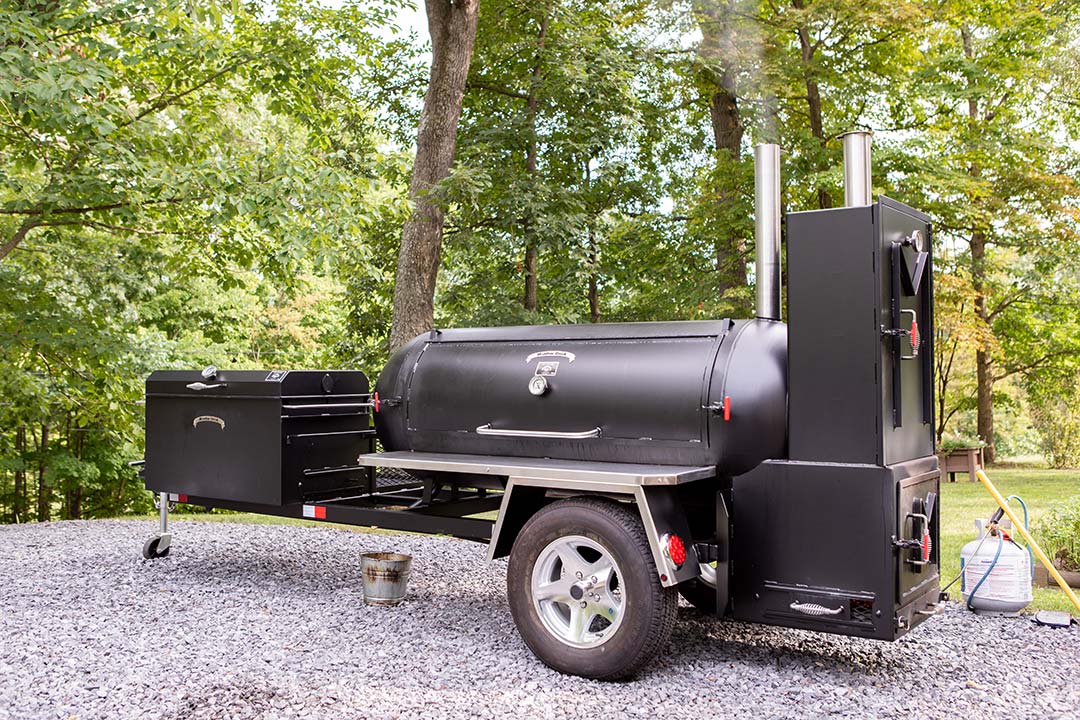
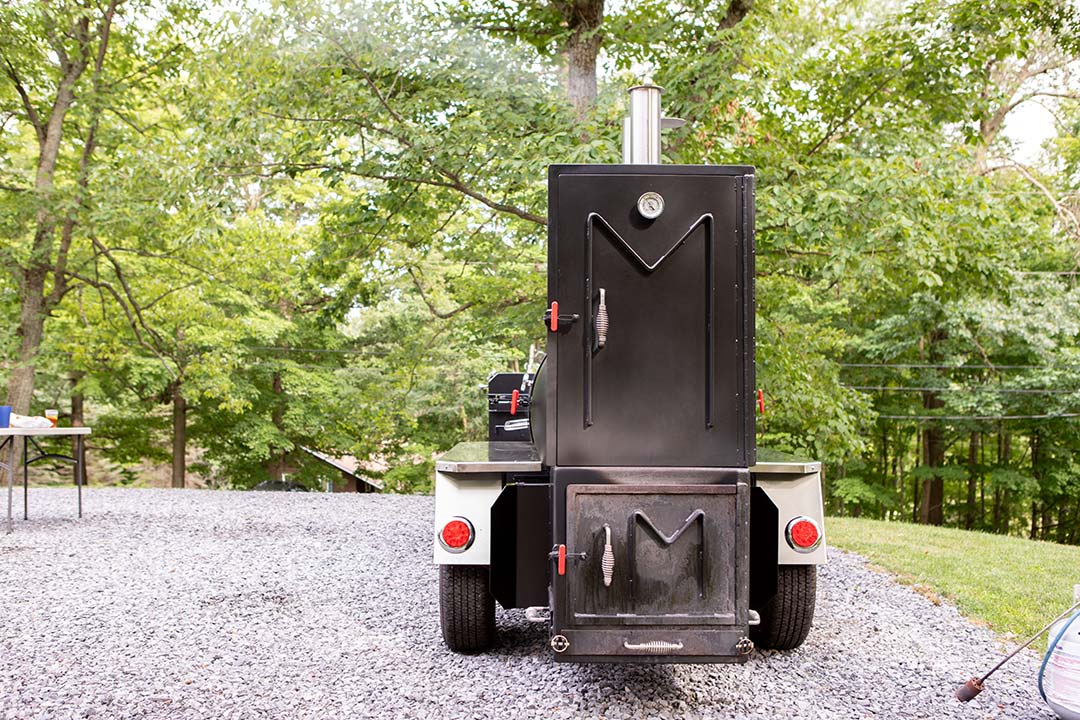
Contact your nearest dealer using our dealer locator here:
Tags
bbq smokers, Big Black, tanks smokers, ts250 smoker